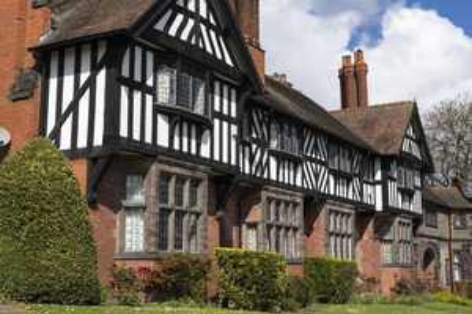Nominating heritage assets

|
| On 23 October 2019, the Communities Secretary Robert Jenrick launched what he called the 'most ambitious heritage preservation campaign for 40 years'. |
Communities across England are being encouraged to nominate heritage assets which make their community what it is. The new campaign will challenge every local authority across England to draw up lists of buildings of significant historical and cultural value to an area. A local heritage champion will be appointed to spearhead the campaign and encourage councils to increase local listings.
Local people will be empowered to nominate heritage assets which are important to them and reflect their local area and identity, supported by a team of heritage experts and funded by £700,000 to help 10 English counties identify areas which need protecting.
The experts will work with the government’s new independent local heritage adviser to promote greater awareness of the benefits of locally listing historic buildings and supporting local people to nominate important buildings which they think should be protected.
The government will also work with Historic England to identify important buildings in these zones to be nationally listed, and Historic England will launch a national campaign on local identity to get the country talking about what defines our heritage.
The planning system recognises three types of heritage asset – those which are of international importance, those which are of national importance and those which are important locally. Nationally important heritage assets (eg listed buildings, scheduled monuments etc) are identified and given statutory protection by DCMS (having consulted Historic England) on the basis of nationally-set selection criteria. Locally important heritage assets are identified by local planning authorities and neighbourhood plan forums based on locally-set criteria.
Robert Jenrick said: “This will empower local people to protect thousands of historic buildings and preserve them for future generations. Getting more buildings locally listed isn’t just about keeping a building intact – it keeps a community’s identity thriving.”
Culture Secretary Nicky Morgan said: “Our built heritage is one of the things that make England one of the top tourist destinations in the world. It helps us attract millions of visitors every year who are keen to see the historic buildings at the heart of our communities, helping to boost our economy and make our towns and cities better places to live, work and visit. By encouraging more local listings, we will ensure that buildings are protected for future generations so that the benefits heritage brings are felt right across the country.”
[edit] Related articles on Designing Buildings
IHBC NewsBlog
Old Sarum fire in listed (& disputed) WW1 Hangar - Wiltshire Council has sought legal advice after fire engulfed a listed First World War hangar that was embroiled in a lengthy planning dispute.
UK Antarctic Heritage Trust launches ‘Virtual Visit’ website area
The Trust calls on people to 'Immerse yourself in our heritage – Making Antarctica Accessible'
Southend Council pledge to force Kursaal owners to maintain building
The Council has pledged to use ‘every tool in the toolbox’ if urgent repairs are not carried out.
HE’s Research Magazine publishes a major study of the heritage of England’s suburbs
The article traces the long evolution of an internal programme to research 200 years of suburban growth
IHBC Context 183 Wellbeing and Heritage published
The issue explores issues at the intersection of heritage and wellbeing.
SAVE celebrates 50 years of campaigning 1975-2025
SAVE Britain’s Heritage has announced events across the country to celebrate bringing new life to remarkable buildings.
IHBC Annual School 2025 - Shrewsbury 12-14 June
Themed Heritage in Context – Value: Plan: Change, join in-person or online.
200th Anniversary Celebration of the Modern Railway Planned
The Stockton & Darlington Railway opened on September 27, 1825.
Competence Framework Launched for Sustainability in the Built Environment
The Construction Industry Council (CIC) and the Edge have jointly published the framework.
Historic England Launches Wellbeing Strategy for Heritage
Whether through visiting, volunteering, learning or creative practice, engaging with heritage can strengthen confidence, resilience, hope and social connections.













